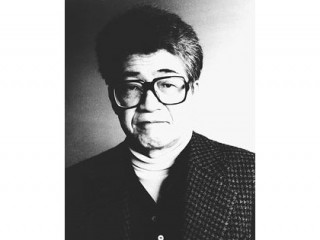
Kobo Abe biography
Date of birth : 1924-03-07
Date of death : 1993-01-22
Birthplace : Kita, Tokyo, Japan
Nationality : Japanese
Category : Famous Figures
Last modified : 2011-08-31
Credited as : Writer and novelist, short fiction, Japanese literature
Kobo Abe was an important figure in contemporary Japanese literature , and attracted an international audience for novels in which he explored the nihilism and loss of identity experienced by many in post-World War II Japanese society.
Abe's works were often linked to the writings of Franz Kafka and Samuel Beckett for their surreal settings, shifting perspectives, grotesque images, and themes of alienation. The labyrinthine structures of his novels accommodated both precisely detailed realism and bizarre fantasy, and his use of symbolic and allegorical elements resulted in various metaphysical implications. Scott L. Montgomery stated: "Abe's most powerful books … displace reality in order to highlight the fragility of an identity we normally take for granted."
Many critics contended that Abe's recurring themes of social displacement and spiritual rootlessness derived from his childhood in Manchuria, a region in northern China seized by the Japanese Army in the early 1930s, and by his brief association during the late 1940s with a group of avant-garde writers whose works combined elements of existentialism and Marxism. In 1948, the year that he published his first novel, Owarishi michino shirubeni, Abe earned a medical degree from Tokyo University. Although Abe never practiced medicine, his background in the sciences figured prominently in his fiction. For example, Daiyon kampyok (1959) is a science fiction novel set in a futuristic Japan that is threatened by melting polar ice caps. The protagonist of this novel is a scientist who designs a computer capable of predicting human behavior. After the machine foretells that its creator will condemn government experiments on human fetuses that would insure Japan's survival in a subaqueous environment, the scientist's wife gives birth to a child with fish-like fins instead of arms. While a reviewer for the Times Literary Supplement deemed the novel's plot "too phantasmagorical and implausible," several critics favorably noted Abe's accurate use of scientific terminology.
Abe garnered international acclaim following the publication of Suna no onn (1962; Woman in the Dune). This novel relates the nightmarish experiences of an alienated male teacher and amateur entomologist who is enslaved by a group of people living beneath a huge sand dune. Condemned to a life of shoveling the sand that constantly endangers this community, the man gradually finds meaning in his new existence and rejects an opportunity to escape. William Currie remarked: "Like Kafka and Beckett …, Abe has created an image of alienated man which is disturbing and disquieting. But also like those two writers, Abe has shown a skill and depth in this novel which has made it a universal myth for our time." With Hiroshi Teshigahara, Abe wrote the screenplay for a film adaptation of Woman in the Dune which was awarded the Special Jury Prize at the 1964 Cannes Film Festival.
Abe's next three novels further examined human estrangement and loss of identity. Tanin no ka (1964; The Face of Anothe) details a scientist's attempts to construct a mask that covers his disfiguring scars. Moetsukita chiz (1967; The Ruined Ma) follows a private detective who gradually assumes the identity of the person he has been hired to locate. Hakootok (1973; The Box Ma) focuses upon a man who withdraws from his community to live in a cardboard box in which he invents his own idyllic society. Jerome Charyn commented that The Box Ma "is a difficult, troubling book that undermines our secret wishes, our fantasies of becoming box men (and box women), our urge to walk away from a permanent address and manufacture landscapes from a vinyl curtain or some other filtering device." In Abe's succeeding novel, Mikka (1977; Secret Rendezvou), the wife of a shoe salesman is mysteriously admitted to a cavernous hospital even though she is not ill. While searching for her at the facility, the woman's husband discovers that the hospital is run by an assortment of psychopaths, sexual deviants, and grotesque beasts.
Abe's novel The Ark Sakur (1988) is a farcical version of the biblical story of Noah and the Flood. Mole, the protagonist, is an eccentric recluse who converts a huge cave into an "ark" equipped with water, food, and elaborate weapons to protect himself from an impending nuclear holocaust. Mole's vision of creating a post-apocalyptic society inside his ark is thwarted by a trio of confidence men whom he enlists as crew members and by the invasion of street gangs and cantankerous elderly people. Edmund White observed: The Ark Sakura may be a grim novel, but it is also a large, ambitious work about the lives of outcasts in modern Japan. …It is a wildly improbable fable when recalled, but it proceeds with fiendishly detailed verisimilitude when experienced from within."
















